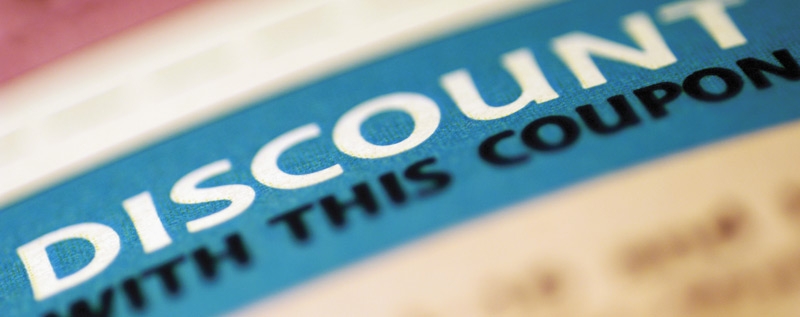
Get the 2017 Twitter Etiquette Update + Twitter Commandment Cheat sheet (GIVEAWAY)
The post has been updated based on changes to Twitter's protocols (9.21.2017).
Understanding Twitter etiquette is vital to those who want to use it to connect and engage with others. Knowing the appropriate way to follow, reply to, and acknowledge others will ensure you don’t stick your foot in your mouth.
Etiquette has been around for centuries. It varies from culture to culture and it changes over time, but the fact remains the same: You’re judged by how you do (or do not) follow the rules.
Twitter etiquette is no different. Sure, this virtual culture is in its infancy, comparatively speaking. But, its users have rapidly developed a sense of decorum – etiquette (aka twitterquette).
You might be one of the bold folks who bucks conformity and throws societal norms to the curb. That’s great. But, it’s still worth acknowledging how following the Twitter dos and don’ts will help (or harm) your brand.
Because lets face it, first impressions can’t be repeated. The nature of Internet-based relationships means you don’t have the luxury of tone of voice and facial expressions. With Twitter, you only have 140 characters and limited elements (such as following, replying to and favoriting) to get your point across.
No matter how you slice it, etiquette is vital for those who want to use Twitter to connect and engage with others. These three etiquette rules will help you handle, following, replying to, and acknowledging others.
No matter how you slice it, etiquette is vital for Twitter users.Click to Tweet
1. Following-Back is Not an Obligation
You are not obligated to follow everyone who follows you. Nor is everyone you follow obligated to follow you back. Blind followers look like robots. Their accounts quickly wither. Despite the fact Twitter is a digital world, it’s important to remember you and those you want to engage with are real people.
Who you follow is a lot like the real-life friends you keep – those folks say a lot about who you are, what you do, and what you stand for. Make sure those you follow are sharing information you find relevant and valuable.
The exception to this “relevancy” quota is real-life friends and colleagues. If someone in your face-to-face life follows you, not following them back can be a major snub. When you run into this problem, follow them back, but create a private list and don’t include them.
Additionally, the most cursed of Twitter offense is the “Twitter-one night stand” – following someone and then unfollowing them the second they follow you back. Just don’t do it. Remember, you’re not some punk frat boy.
Following-back is not an obligation. Remember, you’re not some punk frat boy.Click to Tweet
2. Reply without Spamming Others
Twitter allows users to @reply and @mention. Both of these features are similar – in that they both require you to include an “@username.” However, @mentions and @replies are filtered in newsfeeds differently.
@Replies – All tweets which begin with an “@username” are considered replies. These @replies live on your timeline and the timeline of the user you are mentioning. However, they will only show up in the newsfeed of users who follow both you and the recipient.
@Mentions – All tweets which include an “@username” are considered an @mention. (Yes, this means that all @replies are considered an @mention.) The difference is, tweets which mention a user, but don’t begin with the “@username,” will appear in the newsfeed of everyone who follows you and that user whether these followers follow both of you, or not.
When you want to reply and share that reply with all of your followers, you can begin your tweet with a “.” But, use this technique sparingly. Ask yourself if the @reply is indeed relevant to your entire follower base. Filling your followers newsfeeds with “@replies” which aren’t relevant are spam.
3. Acknowledge to Retweets
You’re getting retweeted. Congrats! That’s awesome. Your content marketing strategy is working. What you’re sharing is resonating with others. Make sure to thank them for retweeting. Users can retweet your tweet in one of three ways:
Auto Retweet
An auto retweet does not allow the user to make any comments or changes to your tweet. Your tweet is shared on their timeline as is with a small byline next to their name. The total number of these auto retweets appears beneath your tweet.
Acknowledging the Auto Retweet – Don’t favorite these retweets. It will simply appear as though you favorited your own tweet.
The best way to acknowledge the retweet is by replying. Additionally, you could send a direct message (DM). However, you only want to do this if you have something valuable to share with the other user. Your best, least intrusive bet, is to identify if the user is someone of interest and then decide if you would like to follow them or not.
Auto Retweet with Comment
Witter allows users to retweet your tweet and add a comment. In this case, a small preview of your original tweet is displayed. Twitter considers this a new tweet, organic to the retweeter’s profile.
Acknowledging the Auto Retweet with Comment – If you like user’s comment, go ahead and favorite the retweet with comment. It won’t appear as though you’re favoriting your own tweet.
Replying with a comment is another good way to acknowledge the retweet. The more personal you can get, the better. Additionally, you could send a direct message (DM). However, you only want to do this if you have something valuable to share with the other user. Your best, least intrusive bet, is to identify if the user is someone of interest and then decide if you would like to follow them or not.
Manual Retweets
Manual retweets require the user to copy and paste your tweet into a completely new tweet. These tweets include the acronym “RT” followed by your “@username.” While manual retweets allow users to add their own personal thoughts to a retweet, should keep in mind there’s been a lot of negative backlash towards them in the Twitter world. Why? Because many Twitter users feel the manual retweet steals their thunder.
Acknowledging the Manual Retweet – Unlike the auto retweet, when you favorite a manual retweet it will appear on the other user’s tweet, not your own. Additionally, you could reply to the tweet with a verbal thank you. Or, you could send the user a thoughtful DM if you have something of value to share.
These three Twitterquette rules barely scratch the surface. In the next month or so, we’re going to dive further into the dos and don’ts. Until then, let us leave you with this sentiment:
Tweet unto others on how you would have them tweet unto you.Click to Tweet
Have specific questions you want addressed? Shoot us an @reply (@RWLDesign) or leave a comment on Facebook. We’d love to address any questions you may have.




